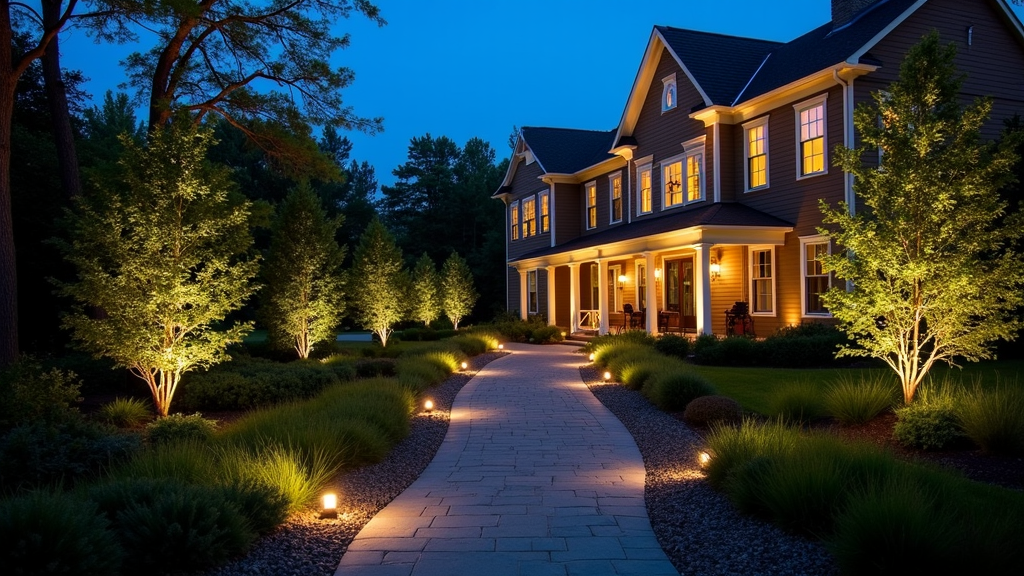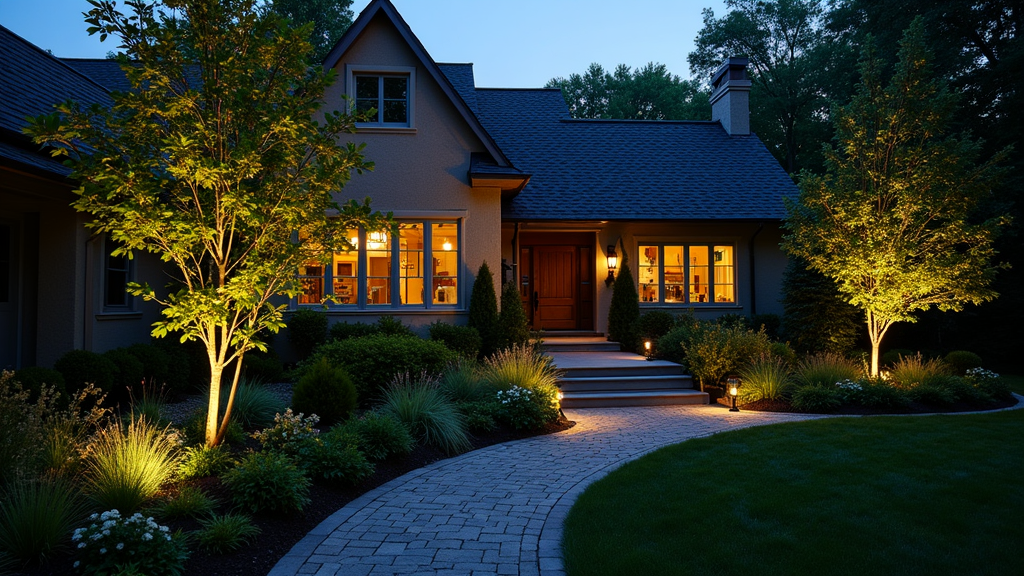Introduction
In our modern world, where hustle and bustle often take center stage, the soothing embrace of nature is more vital than ever. One way to bring the calming beauty of nature into our lives is through landscape design that incorporates fragrant and textured plants. Imagine stepping into a garden that not only pleases the eyes but also captivates your nose and engages your sense of touch. This article delves deep into how we can enhance our landscapes with various plants that engage multiple senses, fostering an inviting atmosphere in homes and public spaces alike.
Engaging the Senses with Fragrant and Textured Plants
When we talk about landscape design, particularly in regions like North Carolina, it’s essential to consider how to engage all five senses. Fragrant plants do more than just beautify; they create an aromatic experience that can uplift moods, evoke memories, or even relax the mind. Textured plants add another layer of engagement, creating visual interest and tactile sensations that can be both luxurious and comforting.
The Importance of Multi-Sensory Landscape Design
Incorporating fragrant and textured plants into landscape design serves several critical purposes:
Enhancing Aesthetics: Visually appealing designs attract attention. Creating Atmosphere: Scents can set a mood for any space. Encouraging Interaction: Engaging multiple senses invites people to touch, smell, and appreciate nature up close. Supporting Wildlife: Many fragrant plants attract pollinators like bees and butterflies. https://canvas.instructure.com/eportfolios/3603412/home/how-to-host-the-perfect-outdoor-gathering-with-a-beautiful-lawn Promoting Well-Being: Nature has therapeutic benefits that cannot be overstated.Fragrant Plants for Your Landscape
Lavender (Lavandula)
Lavender is one of the most beloved fragrant plants due to its soothing scent and beautiful purple blooms. It's drought-resistant and thrives in well-drained soil, making it perfect for many gardens.
- Aromatherapy Benefits: Lavender oil is famous for promoting relaxation. Versatile Uses: It can be used in teas, sachets, or even culinary dishes.
Rosemary (Rosmarinus officinalis)
This aromatic herb not only enhances culinary dishes but also adds a lovely fragrance to gardens.
- Culinary Delight: Use fresh rosemary in cooking or as a garnish. Low Maintenance: Thrives well in sunny spots with minimal care.
Jasmine (Jasminum)
Jasmine’s sweet scent is enchanting during warm summer nights.
- Climbing Vines: Perfect for trellises or fences. Symbolism: Often represents love and purity in various cultures.
Textured Plants for Visual Interest
Ferns (Pteridophyta)
Ferns add lushness with their feathery fronds that sway gently with the breeze.
- Shade Tolerance: Ideal for shady areas where other plants may struggle. Diversity: Comes in various shapes and sizes for added variety.
Hostas (Hosta spp.)
With broad leaves ranging from deep green to variegated hues, hostas are perfect for adding texture.
- Low Light Performance: Great for shaded gardens. Varieties Galore: Each type offers different leaf shapes and colors.
Sedums (Sedum spp.)
Succulent sedums offer unique textures with their fleshy leaves that come in various colors.
- Drought Resistance: Excellent choice for xeriscaping. Visual Appeal: Their shapes create visual interest throughout seasons.
Combining Fragrance and Texture
To truly engage the senses, it’s essential to combine fragrant and textured plants within your landscape design. Here are some tips on how to achieve this:
Layering: Place taller plants at the back of beds, gradually decreasing height towards the front. Color Coordination: Choose color palettes that complement each other while considering seasonal changes. Scent Placement: Position fragrant plants near seating areas or pathways where people will linger. Tactile Variety: Mix smooth-leaved plants with those having rough textures for contrast.Creating a Multi-Sensory Experience
To fully immerse visitors in a sensory-rich environment:
Incorporate walking paths lined with fragrant herbs like mint or basil—imagine brushing against them as you stroll! Create seating areas surrounded by flowering plants like lilacs that release soothing scents when touched. Design water features—like small fountains—that provide visual interest while attracting birds attracted by nearby flowers’ nectar.Landscape Design Trends in North Carolina
North Carolina boasts diverse climates ranging from coastal plains to mountainous regions—each offering unique opportunities for engaging landscapes filled with fragrant and textured flora.
1. Native Plant Integration
Using native species tends to promote biodiversity while reducing maintenance needs—think of incorporating wildflower mixes enriched with aromatic blooms like bee balm!
2. Edible Landscapes
Why settle for ornamental gardens when you can grow edible ones? Combining herbs such as thyme alongside berry bushes creates lush greenery while satisfying culinary cravings!
3. Pollinator Gardens
The trend toward supporting local wildlife encourages planting sunflowers alongside lavender—a perfect combination attracting both bees’ buzzes & butterflies’ fluttery elegance!
FAQ Section
Q1: What are some easy-to-care-for fragrant plants?
A1: Lavender, rosemary, and thyme are excellent choices—they require minimal watering once established!
Q2: How do I choose textured plants suitable for my climate?
A2: Research local hardiness zones; select varieties known to thrive within those conditions—consulting a local nursery can help too!
Q3: Can I mix edible herbs into my flower garden?
A3: Absolutely! Many herbs have beautiful foliage & flowers; they’ll enhance aesthetics while providing flavorsome options right at home!
Q4: What’s the best time to plant these selections?
A4: Early spring or fall is ideal; this allows roots time to establish before summer heat hits full force!
Q5: Are there any drawbacks to using fragrant plants?
A5: Some individuals may have allergies; it’s wise always check if anyone visiting has sensitivities beforehand!

Q6: How do I maintain my sensory garden year-round?


A6: Regular pruning & deadheading will keep things tidy; consider mulching during winter months too—it protects roots from severe temperatures!
Conclusion
Engaging the senses with fragrant and textured plants elevates landscape design beyond mere aesthetics—it transforms spaces into immersive experiences brimming with beauty! Whether you're designing your own backyard oasis or planning community parks across North Carolina's picturesque landscapes—the potential is limitless! By carefully selecting flora that appeals not just visually but also aromatically & tactically—you’re crafting environments where people feel welcomed & connected—to nature itself! So why wait? Dive into designing your sensory-rich oasis today!